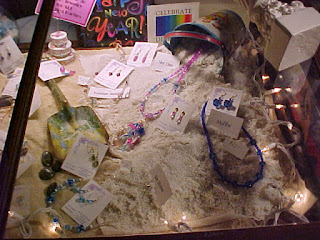Watercolour Play - Simple Leaves
It's good to reach beyond your comfort zone when you need to find new creative inspiration.
Let's assume you've never picked up a paintbrush in your life. (It may be that you're the world's foremost watercolourist...this exercise is still a good one to begin with at the start of each painting session)
Let's begin with the very basics: tools, materials.
When you were 5 years old, a limp soft haired brush worked fine with poster paints. But now, as a grown-up, you ought to try grown-up tools. A round nylon watercolor brush has enough snap to serve you well, and the capacity to hold sufficient paint so you can make one sinuous stroke of colour to define an object. Number 4, 6, and 8 are generous sizes.
Paint is pigment plus medium. With watercolour, raw pigment is mixed with Gum Arabic, which is the sap of the Acacia Arabica tree. Some pigments are natural earth, usually clays, like Raw Sienna and Terra Verte. Some are plant derived like gamboge, and rose madder. Others are chemically derived, like cadmium red and cobalt blue. Some manufacturers add fillers to student grade colours to make them more affordable. I prefer to use the best paint I can buy. I'd rather have six tubes or pans of the finest professional grade colours, than to have a dozen of cheap colours that won't give me adequate saturation and brightness. (Actually, I'd rather have a tube of every colour ever made.)
I am a colour junkie, if it's a colour, I own it. But range of colours is not so necessary. For this exercise, you need just three colours, red, blue, yellow. They are the primary colours, and from them many other colours can be mixed.
So let's start with french ultramarine blue hue (genuine ultramarine's cheaper cousin) cadmium red, and cadmium yellow. From these three many other colours can be made.
A clever way to create your paint box is to recycle an old mints tin, and fill it with plastic watercolour pans. You can purchase your paint packaged in these pans or buy a tube of watercolour paint and fill an empty pan.
Paper comes in hundreds of varieties. A good watercolour paper has some texture, and is not so absorbent that the colour bleeds if it is very wet. You want the paint to mostly sit on the surface of the paper and penetrate it only a little bit. The paper should be thick enough to not buckle or bleed through. If you like a particular paper but it is prone to buckling, tape it to a rigid board with painters masking tape, and run it quickly under the water tap. Let it dry. It will shrink against the tape, then it shouldn't buckle when you paint wetly upon it.
Colour test sheet.
Starting from pure yellow, lay down a wash on a scrap of paper, gradually adding a touch of blue to it until you have a satisfactory green.
One stroke and multi stroke leaves.
Using a round brush, wet only the very tip with the particular combination of yellow and blue that gave you the green you liked, and then in one stroke, from the top of the brush dragging down, increasing the pressure on the brush so the final result is a green leaf shape that goes from thin to thick.
Draw a gentle S line going diagonally from one edge of your paper to the other. Starting at the top, and using your smallest brush, paint leaves in one stroke using this technique. Every third leaf, change to a bigger brush.
Wreath of Oak
Oak leaves can be sharply pointed or round and lobular. Let's play with colour mixing on the paper with rounded oak leaves. Make a grid or line of squares of the colours which you intend to use, mixing them on the paper.
Then, using a round brush, quickly sketch the colours into leaf shapes. Don't worry about outline. This is about color, and movement. Let the colours bleed into each other as you add colors wet into wet. Then, when the paint has dried, add a touch of another colour. Play with it. You're not painting something that will be framed. This is strictly for fun.
Exercises like these are without obligation or expectations. There is no success or failure. There is something very satisfactory about this. And whether it is a warm up exercise for a session of more serious painting, or for writing, or making music, or cooking or coding, it will get your creative juices flowing.
























